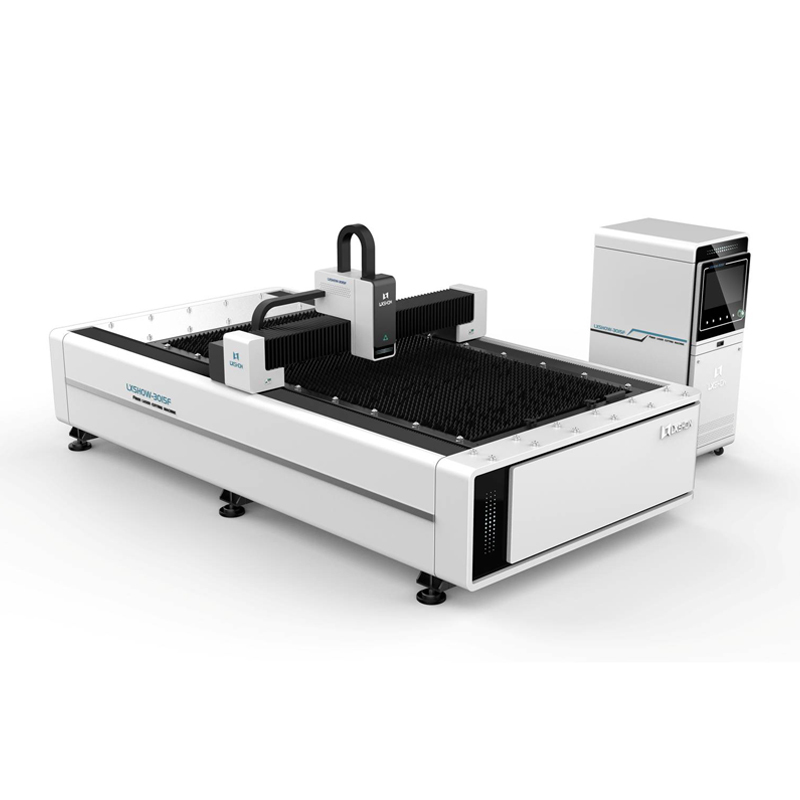6 large function! Let laser cutting efficiency is doubled.
The application of fiber laser cutting equipment in the sheet metal processing industry is more and more widely accepted and adopted. On the one hand, it can greatly improve processing efficiency; on the other hand, it promotes the intelligent and automated process of sheet metal processing. From the strategic point of view of the current development, it has gradually replaced traditional cutting processing methods.
In the laser cutting process, with the increase in orders and the expansion of the business scale, higher processing efficiency and quality have always been their pursuit.
In the idle stroke of the early laser cutting machine, the cutting head had to complete three actions: ascending (to a sufficiently safe height), translation (arriving above point B), and descending.
Nowadays, in the cutting process, there are six practical functions. With these practical functions, the processing efficiency and cutting performance of the laser cutting machine can be greatly improved.
leapfrog
Leapfrogging is the idle way of laser metal cutting machines. In the development process of the laser cutting machine, the leapfrog can be regarded as an outstanding technological advancement. Leapfrogging only takes up the translational time from point A to point B, and saves the time of ascent and descent. The frog jumped and caught the food; the frog jump of the laser cutting machine "caught" high efficiency. If the laser cutting machine does not have the leapfrog function, I am afraid it will not enter the market.
Autofocus
When cutting different materials, the focus of the laser beam is required to fall at different positions on the cross-section of the workpiece. Therefore, it is necessary to adjust the position of the focus (focus). Early laser cutting machines generally used manual focusing; now, many manufacturers' machines have achieved automatic focusing.
The automatic focusing method is: before the beam enters the focusing mirror, a variable curvature mirror (or adjustable mirror) is set, and the divergence angle of the reflected beam is changed by changing the curvature of the mirror, thereby changing the focus position. This function can help the machine automatically adjust the focus to the most suitable position quickly.
Automatic edge finding
The automatic edge finding function can sense the inclination angle and origin of the sheet, and adjust the cutting process to suit the angle and position of the sheet, thereby avoiding waste. With the help of the automatic edge finding function, it saves the time of adjusting the workpiece earlier-it is not easy to adjust (move) workpieces weighing hundreds of kilograms on the cutting table, which improves the efficiency of the machine.
Concentrated piercing
Centralized perforation, also known as pre-perforation, is a processing technology, not a function of the machine itself, it needs the help of an automatic programming system when it is used. When laser cutting thicker plates, each contour cutting process has to go through two stages: 1. perforation and 2. cutting.
Centralized perforation can improve processing efficiency. By adopting the centralized perforation method, the focus can be adjusted to a position suitable for perforation. After the perforation is completed, the machine is paused, and then the focus position is adjusted to the best position required for cutting; in this way, the perforation time can be shortened by more than half, greatly Improve efficiency. It is also possible to adjust or change other process parameters between concentrated piercing and cutting (for example, air + continuous wave can be used for piercing, and oxygen can be used for cutting, and there is enough time to complete the gas switching).
Bridge position (micro connection)
During the laser cutting process, the sheet material is supported by the serrated support bar. If the cut part is not small enough, it cannot fall from the gap of the support bar; if it is not big enough, it cannot be supported by the support bar; it may lose its balance and warp. The cutting head moving at high speed may collide with it, and the cutting head may be damaged in the light of the shutdown.
This phenomenon can be avoided by using the bridge position (micro-connection) cutting process. When programming the graphics for laser cutting, the closed contour is intentionally broken in several places, so that after the cutting is completed, the parts adhere to the surrounding materials without falling. These broken places are the bridges. Also called breakpoints, or micro-connections. The distance of the break, about 0.2~1mm, is inversely proportional to the thickness of the sheet. Based on different angles, there are these different names: based on the contour, it is disconnected, so it is called a breakpoint; based on the part, it is adhered to the base material, so it is called a bridge or a micro-connection.
The bridge position connects the parts with the surrounding materials. The mature programming software can automatically add the appropriate number of bridge positions according to the length of the contour. It can also distinguish the inner and outer contours, decide whether to add bridges so that the inner contours (waste) that do not leave the bridges will fall, and the outer contours (parts) of the bridges will be glued together with the base material and will not fall, thus avoiding Sorting work.
Common cutting
If the contours of adjacent parts are straight lines and the angles are the same, they can be combined into a straight line and cut once. This is the common edge cutting. Obviously, co-edge cutting reduces the cutting length, and co-edge cutting does not require the shape of the part to be rectangular. Therefore, the processing efficiency is greatly improved.
























